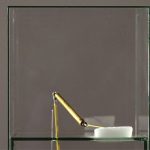“Explosive Conductor” by Evelina Rajca
Title:
Artist(s) and People Involved:
Exhibiting Artist(s):
Symposium:
Venue(s):
Creation Year:
Medium:
Duration:
Artist Statement:
Explosive Conductor is an artifact of the research project “Anästetiker” (2012–2013) by Evelina Rajca. The title is coind by the terms, “anesthetic” and “aesthete”. Within this research project different artifacts show experimentally to what extent the density and aggregated state of matter influences the presumed presence or absence of options for action they culminate in a complex mixed media room installation or they can be shown separately as audiovisual installations. In this research project Rajca was interested in elaborating different methods in order to figure out “how we can become aware of substances that we, for example do not sense `directly´ but that affect our well-being”.
Explosive Conductor is a two-channel audiovisual installation, here within the right channel an experiment with solid carbon dioxide (CO2) is presented, which doubles as a compositional sound study. Dry ice is placed in a sealed partial vacuum glass box. A brass pin inside the box strikes and drills through the dry ice. The pressure in the box rises due to the sublimation of dry ice. The needle moves in accordance with the concentration of the gas production. The sound piece ends with the explosion of the glass vitrine. Computers, sensors and detectors steer the process. The other channel shows a snowy landscape made out of dry ice, inspired by early geoengineering / weather modification experiments.
Solid carbon dioxide, also known as “dry ice,” does not naturally occur on earth, but it is an industrial product used, for example, for the cooling of food. As it changes from solid into gaseous form, there it develops a gas cushion around the carbon dioxide, which, when pressed against a suitable resonating body made of metal, generates extraordinary vibrations. This results in a variety of sounds –cries, sighs, calls of delight and of horror– that are based on different parameters such as volume, surface structure, and temperature of the materials and thus can be deliberately modulated by the instrumentalist. Depending on its density, carbon dioxide has different effects: analgesia –anesthesia– death.
Since the density and aggregate”d” state of a substance determines its level of toxicity, keywords and ideas such as irreversibility and fetish are also of central importance in Evelina Rajca research process “Anästhetiker” and plays a role in another artifact within this project: the sound instrument “fortune teller” made from antique, radioactive uranium glass plates. Mrs. Rajca’s interdisciplinary projects convince not least because of their surprising, yet sensitive interconnection of artistic experiment and scientific speculation. The work by Evelina Rajca is distinguished by a combination of high technical skill with the intelligent use of the symbolic and social aspects of a particular topic.







